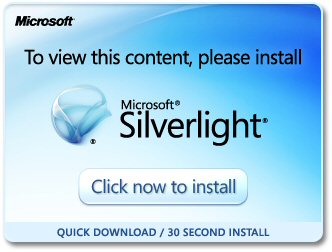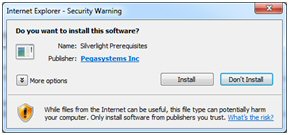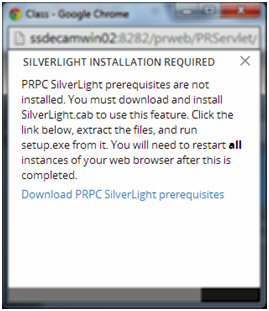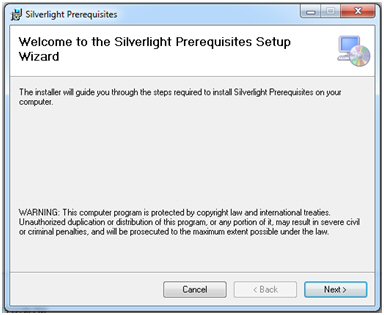Ability to train the text analytics model based on email attachments
Valid from Pega Version 8.6
You can now train the text analytics model for Pega Email Bot™ based on training data from email attachments. As a result, you improve the natural language processing (NLP) analysis for your email bot so that your system detects the correct language, sentiment, topics, and entities from both the body of emails and their attachments. By default, you train the text analytics model based only on training data from the body of emails.
For more information, see Enabling training the model based on email attachments.
Deprecation of EAR deployments in Pega Platform 8.6
Valid from Pega Version 8.6
Starting with Pega Platform 8.6, EAR deployments of Pega Platform are deprecated. In the upcoming 8.7 release, EAR deployments will not be supported. The following rules that require EAR deployments will also be deprecated and no longer supported in Pega Platform 8.7:
- Connect EJB
- Connect JCA
- JCA Resource Adapter
- JMS MDB Listener
- Service EJB
With this deprecation, you can use the latest tools and keep your application up to date.
Upgrade impact
In Pega Platform 8.6, you can still create rules that require EAR deployments and update existing rules. However, after an upgrade to Pega Platform 8.7, rules that require EAR deployments are no longer supported.
What steps are required to update an application to be compatible with this change?
To prepare your application for this change well in advance of the Pega Platform 8.7 release, see the following table for a list of alternative rules and for guidance on modernizing your application.
| Deprecated rule type | Alternative rule type | Recommended configuration |
| Connect EJB | Connect REST | Substitute legacy EJB resources with a REST API, and use REST connectors to interact with them. |
| Connect JCA | Connect REST | Substitute legacy JCA resources with a REST API, and use REST connectors to interact with them. |
| JCA Resource Adapter | JCA resource adapters are data records that are used within the scope of a Connect JCA rule. If you replaced Connect JCA rules in your application with Connect REST rules, JCA resource adapters are no longer relevant. | No further configuration is necessary. |
| JMS MDB Listener | JMS Listener | Replace JMS MDB Listener configurations with standard JMS Listener configurations. |
| Service EJB | Service REST | Redefine your EJB services as a set of RESTful service APIs, and invoke them over HTTP/HTTPS. |
For information on the supported platforms that are affected by this deprecation, see Pega Platform 8.6 Support Guide.
Upgrading to the secure threading mechanism for email bots
Valid from Pega Version 8.1
In Pega Platform™ version 8.6, Pega Email Bot™ includes a more secure threading mechanism to help track emails from customers and other stakeholders in separate threads for an email triage case.
Upgrade impact
If you upgrade from Pega Platform version 8.5 or earlier, in which you configured an Email channel, perform the following steps to ensure that your system uses the new secure threading mechanism:
- Update the service email rule that the system uses to send an email reply as the initial acknowledgment.
- Update the email reply template in the data transform rule that the system uses when a customer service representative (CSR) sends the reply.
For more information about creating an initial acknowledgment email and email reply template, see Creating outbound email templates. For more information about the secure threading mechanism, see Use a secure threading mechanism in emails.
What steps are required to update the application to be compatible with this change?
For the initial acknowledgment email used by your email bot, update the service method for your email listener rule. On the Response tab for this service email rule, expand the Message contents section. In the Message data section, you specify the rule that defines the structure of the content of the email body. In Pega Platform version 8.6, you use for this purpose the pyEmailAcknowledgement correspondence rule that takes into account the selected built-in template. This template includes the security code tag that the system uses for the secure threading mechanism. If your application uses a different rule in the Message data section, update this definition to match one of the built-in correspondence template rules, for example, EmailAckTemplate_Clear.
The pySetEmailBotReplyTemplate data transform rule sets the name of the email correspondence rule that the system uses as the email reply template. If you do not want to use the default approach using the Classic, Cobalt, or Clear outbound email template themes, override this data transform rule to set the email correspondence rule name for the Param.ReplyTemplate target in the Source column field.
For more information about how to update the service email rule and the data transform rule to ensure that your system uses the secure threading mechanism, see Upgrading to the threading mechanism available in the 8.6 version.
Legacy Parse XML rule configurations must be upgraded to edit them
Valid from Pega Version 8.6
If your application has Parse XML rules that use the legacy configuration from Pega Platform™ 5.x, you cannot edit these rules after you upgrade to Pega Platform 8.6 until after you upgrade them to use tree-based parse rule configuration.
You must upgrade a Parse XML rule that you want to edit if it shows the following warning when you open it in Dev Studio.
This type of Parse XML rule is deprecated. An upgrade should be performed.
An option to upgrade also displays below the message.
Upgrade impact
Parse XML rules with the legacy configuration do not map data to the clipboard, and the rule definition is empty. After you upgrade to Pega Platform 8.6, you cannot edit Parse XML rules that you created in Pega Platform 5.x or earlier until you upgrade them to use tree-based parse rule configuration.
What steps are required to update an application to be compatible with this change?
Update legacy Parse XML rules to use tree-based parse rule configuration before you edit them in Pega Platform 8.6. Using tree-based parse rules is considered a best practice.
- Open the legacy Parse XML rule.
- On the Mapping tab, click Upgrade.
Result: The Allow tree editing? check box is displayed and is automatically selected. You can add attributes and elements to the tree structure, or delete them. - Save the upgraded rule configuration.
For more information, see Parse XML rules.
Connect MQ rules configured with alias queue do not work after upgrade
Valid from Pega Version 8.6
Connect MQ rules that you defined with an alias queue in earlier versions of Pega Platform do not work after an upgrade to Pega Platform 8.6.
Upgrade impact
If you defined an alias queue in Connect MQ rules, after an upgrade to Pega Platform 8.6, those Connect MQ rules do not work.
What steps are required to update an application to be compatible with this change?
In the Pega-IntegrationEngine ruleset, create the following dynamic system settings and their default values:
- "mq/pmo" = 0
- "mq/gmo" = 0
- "mq/oo_request" = 1040
- "mq/oo_response" = 16
For more information, see Creating a dynamic system setting.
Word merge support with Microsoft Silverlight plug-in
Valid from Pega Version 7.1.3
PRPC features that integrate with the Word merge capability are now cross-browser. ActiveX controls (which are only compatible with IE) have been replaced with Microsoft Silverlight. This plug-in must be downloaded separately from Microsoft, as it is not shipped with PRPC.
Some common PRPC features affected by this change include the Application Document Wizard, App Profile, Specifications Landing Page, Specification form, and Case Type Landing Page.
Prior to using these features, Users of PRPC 7.1.3 need to set up their client system(s) as follows:
1. Install Silverlight plug-in
Follow the PRPC prompt to install Silverlight when you attempt to use the Word merge feature:

Or download package directly: www.microsoft.com/silverlight/
2. Install PRPC prerequisites
Microsoft Internet Explorer (IE) browsers automatically detect the need for PRPC prerequisites and will prompt for install:

Non-IE browsers will load a pop-up window when the user attempts to use the Word merge feature. Use the link to manually download PRPC prerequisites:

Extract the .zip file, execute setup.exe and follow the install wizard:

Administrators setting up multiple clients at once may refer to the pzSLpreReqs.cab available in the PRPC 7.1.3 resource kit.
3. Restart browser
Log out of PRPC, close all open sessions and restart your browser.
The PRPC feature integrated with Word merge is now ready for use; Silverlight prompts are no longer displayed.
4. Troubleshooting
Silverlight installation requires access to your file system and a registry setting update to “trust” the associated Verisign certificate. Contact your administrator if you encounter any security or permission errors during this process.
See the PRPC Developer Help for more information on browser setup requirements.
Integration
Valid from Pega Version 7.1.4
Critical customer-driven product improvements were made to SOAP services, SOAP connectors and connector wizard, CMIS connectors, and the Pega Image Viewer. These fixes addressed a handful of functionality gaps discovered in PRPC 7.1 and earlier releases by internal and external customers.
- A Connect-CMIS instance which was created using a reference to an ATOM Server Instance may now use Global Resource Settings.
- The Execute Synchronously (one-way operation) has been enhanced for SOAP Services.
- The Silverlight version of PegaImageViewer has been enhanced to print ranges of multiple pages at once.
- The SOAP Wizard has been improved to show all the ports which are available in the WSDL file.
- Two way SSL has been enhanced for the Connect-REST rule.
Data Management
Valid from Pega Version 7.1.3
Improvements to data handling were made for the Data Pages, autopopulate properties, and reference properties. Lightweight lists were optimized.
- Property references are now maintained on the Work Page.
- PageList properties can reference a Data Page.
- Auto-populate properties can be used in a seciton to show results from a Data Page.
- Data Pages can run in “Page” mode as well as “List” mode
- The "Rules Not Using Lightweight List" report was enhanced.
- A PageList property that references a Data Page may be used to populate a grid.
- Related autopopulated properties can now be referenced.
Integration
Valid from Pega Version 7.1.3
Usability enhancements have been made to the integration wizards. The REST end-point integration has been improved, and XML parsing functionality has been enhanced.
- PRPC services can return Report or Listview data as XML.
- Work items may now be processed when accessing from a link in system-created emails.
- An SMTP outage will not cause an application to stop working.
- File listener will now read files using a leading asterisk (*).
- XML Parse rule will handle schema validation.
- PegaImageViewer will now work with Version 7.1.
- Security measures are enhanced for SOAP connections to web services.
- After generating rules using REST wizard, the Undo Generation button will delete all the generated rules.
- Email wizard has been improved.
Tracer supports SOAP messages
Valid from Pega Version 7.1.5
You can now select a Tracer Settings option to display SOAP connector and services messages in Tracer, which provides users with a better understanding of SOAP connector behavior.

